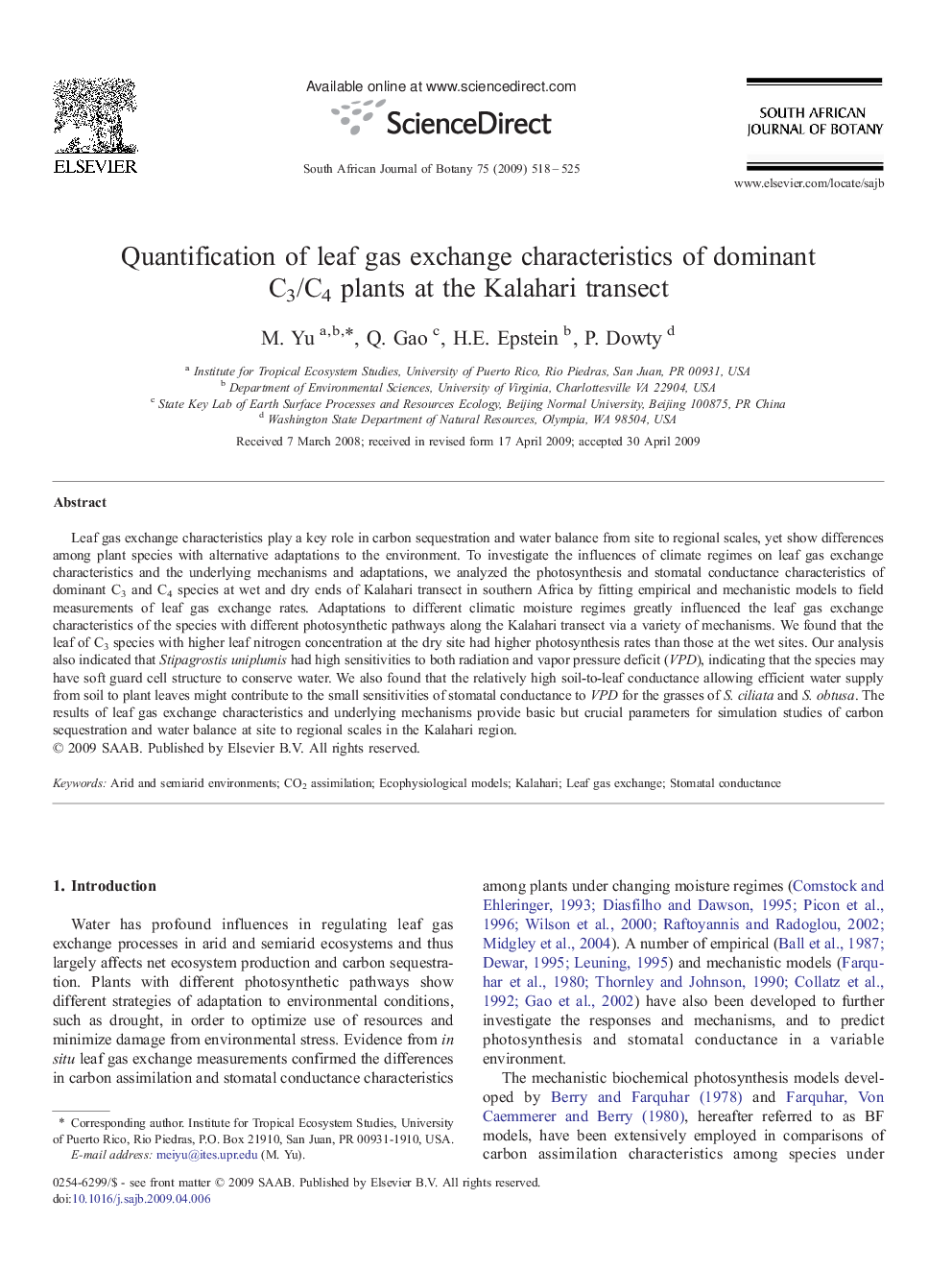| Article ID | Journal | Published Year | Pages | File Type |
|---|---|---|---|---|
| 4521997 | South African Journal of Botany | 2009 | 8 Pages |
Leaf gas exchange characteristics play a key role in carbon sequestration and water balance from site to regional scales, yet show differences among plant species with alternative adaptations to the environment. To investigate the influences of climate regimes on leaf gas exchange characteristics and the underlying mechanisms and adaptations, we analyzed the photosynthesis and stomatal conductance characteristics of dominant C3 and C4 species at wet and dry ends of Kalahari transect in southern Africa by fitting empirical and mechanistic models to field measurements of leaf gas exchange rates. Adaptations to different climatic moisture regimes greatly influenced the leaf gas exchange characteristics of the species with different photosynthetic pathways along the Kalahari transect via a variety of mechanisms. We found that the leaf of C3 species with higher leaf nitrogen concentration at the dry site had higher photosynthesis rates than those at the wet sites. Our analysis also indicated that Stipagrostis uniplumis had high sensitivities to both radiation and vapor pressure deficit (VPD), indicating that the species may have soft guard cell structure to conserve water. We also found that the relatively high soil-to-leaf conductance allowing efficient water supply from soil to plant leaves might contribute to the small sensitivities of stomatal conductance to VPD for the grasses of S. ciliata and S. obtusa. The results of leaf gas exchange characteristics and underlying mechanisms provide basic but crucial parameters for simulation studies of carbon sequestration and water balance at site to regional scales in the Kalahari region.
